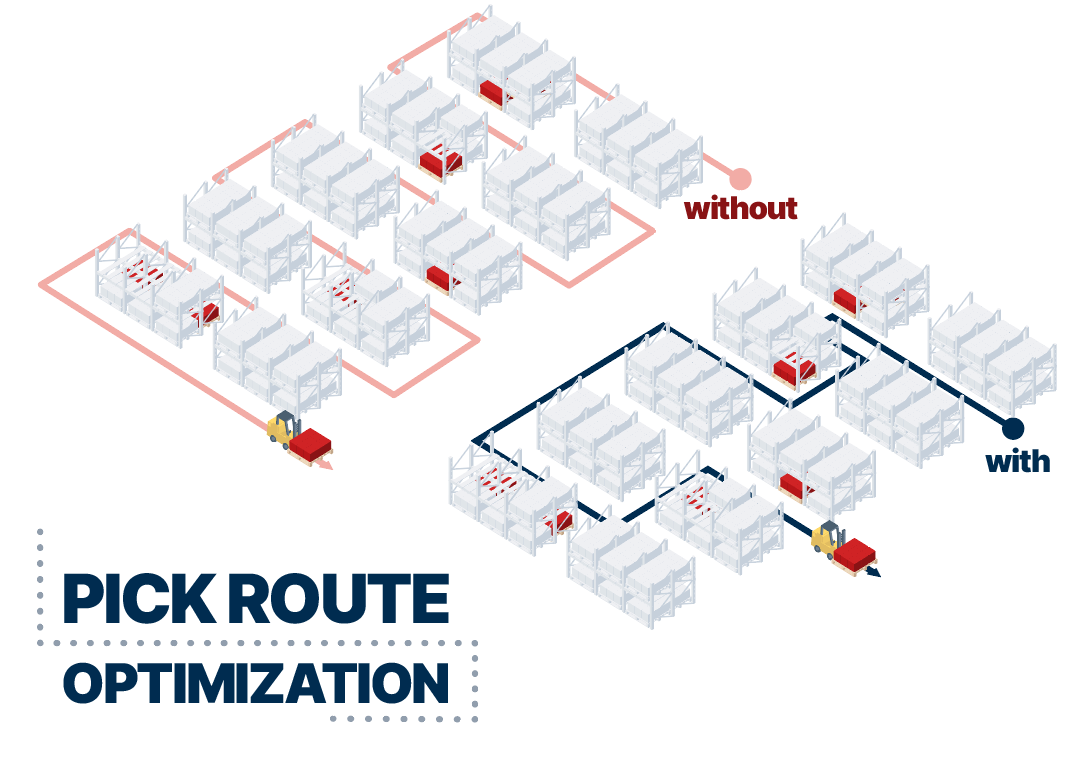- Home
- Knowledge center
- Blog
- 3 warehouse optimization tips
Blog
3 WAREHOUSE OPTIMIZATION TIPS
Recent years have not exactly been a walk in the park for warehouse management. The changing consumer demands and ongoing supply chain disruptions are forcing adaptation at a high pace. To meet challenges, your warehouse really must play its best game. Here are three warehouse optimization tips that will allow you to build resilience in your warehouse operation.
#1 Use your space smarter
Building design and construction are given factors for storing goods. Still, a lot of fine-tuning can be done for warehouse space optimization based on information from your warehouse management system (WMS). By analyzing data, you can adjust the placement of SKUs for optimal picking efficiency. This includes:
- Giving fast-selling goods better placements
- Identifying and removing end-of-life SKUs
- Putting slow movers that stay longer in the warehouse in farther locations
With these actions, you can improve your warehouse throughput and decrease operating costs by up to 30% per picked line. And it´s not all, because WMS functionalities with Artificial Intelligence can further boost warehouse storage optimization. For instance, Article Association analyzes customers buying patterns and places articles often picked together close to each other. Pick Group Optimization draws assumptions from order history data, learns which articles are ordered together, and suggests moving the articles to a more optimal pick area.
#2 Make every movement matter
A warehouse optimization project can go a long way by improving movements. Reducing time and distance in pick rounds while maintaining or even enhancing quality leads to lower costs, better working conditions, and less wear and tear on equipment.
The good news is that there are smart WMS solutions that help you achieve just that. Pick Route Optimization, for example, uses AI with advanced and evolving algorithms to calculate the shortest route between all items on the pick list. Based on a digital CAD map of the warehouse, an optimized route for each pick round is created in real-time. This means that all items in the warehouse are assigned a geographical location and a regular stock location. The results? Tests have shown 20 – 30 % savings in pick route distance, and one customer saved 900 kilometers of unnecessary forklift driving in the warehouse in just two months.

#3 Automate wisely
Warehouse automation is booming, and rightly so. It can speed up picking, vastly improve throughput, and cut the potential for human error. However, manual processes are still more efficient and flexible in certain areas. So, how to optimize warehouse operation with automation?
The key is to use the right mix of automated and manual processes, depending on factors such as the maturity of your business, the diversity of your product range, and integration with other systems.
Automating the decision-making logic with a WMS is the first step to reducing human error and increasing warehouse efficiency. For more complex flows, material handling automation can be implemented, too, such as conveyors, stacker cranes, or AGVs. The WMS acts as a “brain” to manage your solution’s manual, automated, and shared logic. The more automation equipment you have, the more you need a warehouse control system (WCS). This software acts as a message broker between machinery and the WMS and provides integration with all systems to avoid “islands of automation.”
Conclusion
Although the world of warehousing is full of unexpected twists and turns, a WMS solution, with the right tools adapted to your needs, is an effective way to optimize warehouse operations and overcome any challenges.
